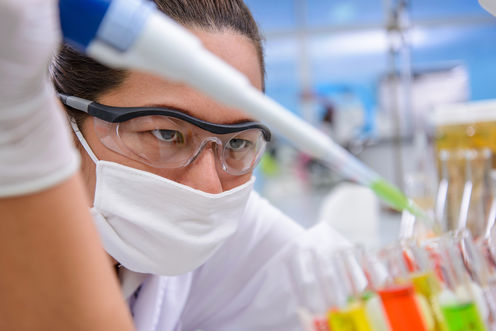
Ever wonder how much it costs to develop a new drug? The independent, non-profit research group, The Tufts Center for the Study of Drug Development, estimates US$2.6 billion, almost double the centre’s previous estimate a decade ago. But how accurate is this figure?
While the details of the study remain a secret, a press release, slideshow and background document on the Tufts website provide some insight into how this figure was calculated. Interestingly, only slightly more than half of this cost is directly related to research and development (R&D). US$1.2 billion are “time costs” – returns that investors might have made if their money wasn’t tied up in developing a particular drug.
As expected, these costings have attracted the attention of policymakers, consumer advocates and critics of big pharma. In the New England Journal of Medicine, Harvard University Professor of Medicine Jerry Avorn questions several assumptions underpinning the Tufts costing – particularly the unverifiable claim that up to 80% of compounds are abandoned at some point during development.
Avorn is also unconvinced by the Tufts assertion that an annual return on capital of 10.5% (which was used to calculate the “time costs” component) is needed to attract investors, noting that “bonds issued by drug companies often pay only 1 to 5%”.
More broadly, Avorn questions the Tufts claim that its US$2.6 billion figure related to only “self-originated” products and wonders whether this includes contributions from the public purse for underlying basic science. If the Tufts figure didn’t include public contributions to research, the real cost of drug development would be even higher.
Finally, Avorn notes that pharmaceutical companies could fund much of their research themselves with the hundreds of billions of their own (untaxed) capital held outside of the United States.
Avorn’s criticisms echo those of the Union for Affordable Cancer, which complains that the study’s figures are already being used as a propaganda tool to justify high drug prices, particularly for cancer.
Like Avorn, the Union suggests that the Tufts figures also ignore the significant public contribution to drug development, particularly for cancer.
Others have argued the Tufts figure is grossly over-inflated. Rohit Malpani, director of policy and analysis at Doctors without Borders notes drugs can be developed for as little as US$50 million, and at most, for US$186 million when failures are taken into account.
Even Industry heavyweights such as GlaxoSmithKline’s CEO Andrew Witty have undermined the Tufts claims by suggesting in 2013 that the US$1 billion dollar figure was a myth.
So why is this debate important and why does it matter whether or not these estimate are correct?
These costs are used to justify high drug prices. These prices increasingly have the potential to disable health-care systems, create enormous opportunity costs (as funds that could be spent on other goods and services are diverted to purchase more and more expensive drugs), and place medicines out of reach of all but the most wealthy individuals or governments.
This is a reminder that the real issue is not how much it costs to develop a drug, but whether or not these drugs are worth the high prices pharmaceutical companies charge for them.
While advocates of a completely free market might see “just” pricing and all forms of price control as “medieval”, “socialist” or as suppressing innovation, others worry that drug prices bear little, if any, correlation with actual clinical value.
Rewarding innovation is necessary, but allowing drugs to be priced according to whatever the market will bear, rather than according to their benefits and cost-effectiveness, leads to inefficiencies, inequities and dramatic global inconsistencies.
Knowing how much it really costs to develop a drug might make it easier to negotiate drug prices on a global level and make revenues more predictable. This would not only be beneficial for society but could also ensure more predictable returns for the pharmaceutical industry.
At the moment, however, the industry seems entrenched in free-market thinking and has so far countered efforts by US lawmakers to shine a light on how much drug development really costs. While secrecy of this type may benefit industry, at least in the short term, this is simply not in the public interest.
Until we know more about the actual cost of drug development, we are in no position to meaningfully critique the corporate model promulgated by the pharmaceutical industry, the drug costs put before regulators, or the claims of groups such as Tufts. Ultimately, that leaves health systems at the mercy of industry.
Narcyz Ghinea receives funding from the National Health and Medical Research Council.
Ian Kerridge receives funding from the National Health and Medical research Council for research into high-cost drugs. He has also previously been a member of the Royal Australasian College of Physicians Working Group that development Guidelines for Interactions with Industry.
Wendy Lipworth receives funding from the National Health & Medical Research Council. She is affiliated with DIA.
